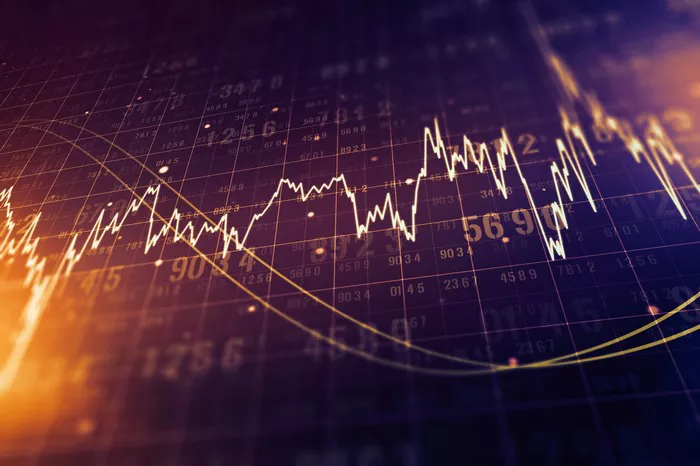In the realm of financial markets, futures contracts play a pivotal role in allowing investors to hedge risk and speculate on future price movements of various assets. Among these, Eurodollar futures stand out as one of the most actively traded instruments, particularly in the realm of interest rate derivatives. This article aims to provide a detailed exploration of Eurodollar futures, covering everything from their basics to advanced trading strategies.
See Also: How to trade eurodollar futures: Things You Need to Know
What are Eurodollar Futures?
Eurodollar futures are futures contracts based on the interest rates offered on U.S. dollar-denominated deposits held in banks outside the United States, typically in Europe. Despite the name, they are not directly related to the euro currency but instead reflect U.S. dollar interest rates in international markets. These futures serve as a crucial tool for investors and institutions to manage interest rate risk and speculate on future interest rate movements.
History and Evolution
The origins of Eurodollar futures can be traced back to the 1980s when the Chicago Mercantile Exchange (CME) introduced them to cater to the growing demand for instruments to hedge against fluctuations in interest rates. Initially, they were designed to provide hedging opportunities for multinational corporations exposed to interest rate risks in their international operations. Over the years, their popularity has grown, and they now attract a diverse array of participants, including institutional investors, speculators, and financial institutions.
Contract Specifications
Eurodollar futures are standardized contracts traded on the CME Group exchange. Each contract represents a notional principal amount of $1,000,000 and corresponds to a specific future three-month deposit interest rate. The underlying interest rate is based on the London Interbank Offered Rate (LIBOR), which is a benchmark interest rate at which major global banks lend to one another in the international interbank market.
Trading Eurodollar Futures
Trading Eurodollar futures involves speculating on the future direction of U.S. dollar interest rates. Market participants can take long (buy) or short (sell) positions depending on their expectations of interest rate movements. The price of a Eurodollar futures contract is quoted as 100 minus the implied interest rate. For instance, if the contract price is 97.50, the implied interest rate is 2.50%.
Uses of Eurodollar Futures
Eurodollar futures serve several purposes for market participants:
Hedging Interest Rate Risk: Businesses and financial institutions use Eurodollar futures to hedge against adverse movements in interest rates that could impact their borrowing costs or investment returns.
Speculation: Traders and investors engage in speculative trading based on their forecasts of future interest rate movements. This speculation can provide liquidity to the market and contribute to price discovery.
Arbitrage Opportunities: Market participants look for arbitrage opportunities between Eurodollar futures and other related instruments to exploit pricing inefficiencies and achieve risk-free profits.
Factors Influencing Eurodollar Futures
Several factors influence the pricing and trading dynamics of Eurodollar futures:
Monetary Policy: Actions and statements by central banks, particularly the Federal Reserve, can significantly impact expectations of future interest rate movements.
Economic Data: Indicators such as employment figures, GDP growth, and inflation reports can influence market expectations regarding interest rates.
Geopolitical Events: Geopolitical developments, such as trade tensions or political instability, can create uncertainty in financial markets and affect interest rate expectations.
Market Sentiment: Investor sentiment and risk appetite can influence demand for Eurodollar futures as a hedging or speculative instrument.
Trading Strategies
Market participants employ various strategies when trading Eurodollar futures:
Directional Trading: Taking long or short positions based on expectations of interest rate movements.
Spread Trading: Trading the price differential between different contract months or different maturities to capitalize on relative value opportunities.
Interest Rate Curve Strategies: Taking positions based on expectations of the shape of the yield curve (flattening, steepening) and how it may evolve over time.
Option Strategies: Using Eurodollar options in combination with futures to create complex payoff structures that suit specific risk management or trading objectives.
Risk Management
While Eurodollar futures can be powerful tools for managing risk and generating returns, they also carry risks that market participants need to manage:
Interest Rate Risk: Changes in interest rates can lead to gains or losses depending on the direction of rate movements relative to positions taken.
Liquidity Risk: In periods of market stress or low trading volumes, liquidity in Eurodollar futures contracts can dry up, impacting the ability to enter or exit positions at desired prices.
Roll Risk: When rolling over positions from one contract month to the next, changes in the yield curve can affect the profitability of the roll.
Counterparty Risk: While traded on a regulated exchange, there is always the risk of default by counterparties involved in the transaction chain.
Regulatory Environment
Eurodollar futures are subject to regulation by the Commodity Futures Trading Commission (CFTC) in the United States. Regulation ensures transparency, fairness, and stability in the futures markets, providing confidence to market participants.
Conclusion
Eurodollar futures play a crucial role in global financial markets by allowing participants to manage interest rate risk and speculate on future interest rate movements. Understanding their mechanics, contract specifications, and trading strategies is essential for anyone looking to participate in this dynamic and liquid market. As economic conditions and monetary policies evolve, Eurodollar futures will continue to adapt, providing valuable opportunities for hedging and trading in the ever-changing landscape of global finance.


